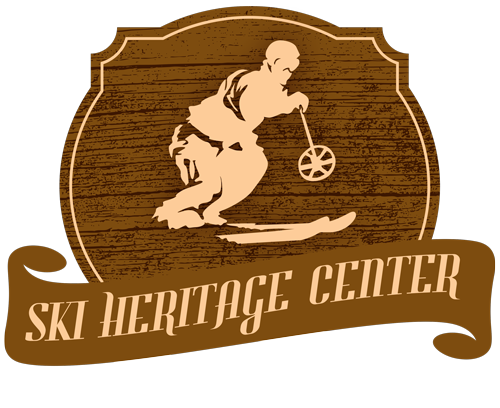They Bet Their Shirts on Skiing #7
By ED SCHENCK, as told to EDMUND CHRISTOPHERSON
That was Then…
(Reprinted from The Saturday Evening Post, March 4, 1950. This is the 7th installment, continued from last week’s Ski Locker feature.)
We worked especially hard on the hill that summer because we’d stuck our necks out again in making a successful bid for 1949’s top ski event, the national Downhill, Slalom, and Combined races. To lay out our downhill racing course, we got Toni Matt, a head ski instructor from Sun Valley. Toni took his time looking around, and the breakneck one-and-three-quarter-mile-long run with a 2500-foot drop that he blazed out caused many an exclamation like one contestant’s “Whew, this is all downhill!” By the time he’d finished this job, Toni had so thoroughly sold himself on Big Mountain that he stayed to start a ski school.
We didn't begin to have enough room in the lodge for the visiting ski racers, so the townspeople volunteered to keep them in their homes for free. It seemed like a good idea to tell these folks just what they were letting themselves in for, so, just before the racers began to arrive in March 1949, we asked them to attend a meeting. By drawing lots Gene Gillis, Olympic skier, and one of Toni Matt's instructors, won the honor of giving the indoctrination talk.
“You've got to realize," he told them, "that skiers aren't like other people. They'll probably arrive loaded down with six pairs of skis and a disreputable-looking old knapsack filled with several dozen kinds of waxes, varnishes, blowtorches, sandpaper, and lots more stuff. They never use more than one or two kinds of wax, but never in ten thousand years could you get them to part with any of it. If you let them in your house, hide or cover your good furniture. Put your bedspreads away and replace them with the mangiest old tarpaulins you can find. Because, sure as hell, they'll get an urge to start working on their skis, and will get out their blowtorches and are certain to spill wax on everything. The best way to handle it is to meet them at the door, and to say firmly, 'Welcome, skier, to our house. But first, put those damned things in the garage or the basement!"'
The day before the nationals, the kids got out of school early, and seventy of them, tramping in chain formation, sidled up the hill to foot-pack the slalom course. From all over the state national ski patrolmen came to help us out., and bunked in the high school gym. Reporters and newsreel cameramen slept in the lodge. More than 300 cars crammed into our parking area, and the overflow stopped along the road halfway into town. Five thousand people, or more than the population of this part of the county, were there to see the races.
The lodge was so crowded by the Nationals that our regular cook, Dorothy Overmeyer, shared her bed with Esther Regan, her 200-pound assistant. About midnight we heard an awful crash from their room, then quiet. The next morning we found that the head of the bed had collapsed, but they'd both been so tired that they slept the rest of the night with their feet up.
When we first opened, everybody and his brother from the whole Flathead River Valley – in which Whitefish is situated – came up to look at Big Mountain and the new lift. But they weren't skiers, and we had to make skiers out of them if we were going to succeed. We figure that anyone we can get on skis three times isn't going to quit. The first time it can be painful, and the second time it's still rough. But on the third try, they get the exhilarating feeling of what a sport it is.
Actually, skiing isn't as rough or as difficult as lots of non-skiers think. After looking us over, George Campbell, a seventy-three-year-old retired Kalispell businessman, started taking lessons. Nowadays he buys a season ticket, averages six days a week on the hill during the twenty weeks our season lasts and does more actual skiing every day than lots of the younger skiers. Jack Emmert, superintendent of Glacier National Park, and in his fifties, has gone in for skiing, and what’s more, he stays over to call square dances at the lodge. Whole families have taken up the sport together. Gosta Erickson has brought in his five kids, aged eight to eighteen, along, lined them up at the bottom of the hill, and gave them instruction. Expert skiers, today they’re a familiar sight, all six of them, streaming down the hill in a procession.
The kids, especially, take their skiing seriously. In the summer one of them is likely to greet me with “Well, Ed, I made 'er. I've got enough for my season ticket and a new pair of boots. Going to get up and use ‘em every day this winter too."
